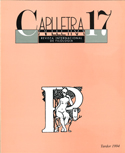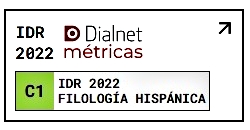Lexicografia i intel·ligència artificial
DOI:
https://doi.org/10.7203/caplletra.17.7397Paraules clau:
lexicografia, intel·ligència artificial, natural language processing (NLP) Resum
Resum
Unlike most of traditional approaches to grammar, today's formal and computational models make use of the lexicon as an essential part of the whole system. Differences between current theoretical and computational models are more and more insignificant albeit the latter are perhaps still characterized by yielding full priority to minimalist solutions over more abstract considerations such as exhaustivity or formal elegance. The paper introduces some strategies in linguistic computation for natural language processing (NLP) according to a typology based on functional complexity and describing in every case the scope and the role performed by the dictionary: pattern matching, semàntic grammars, syntactic parsers, augmented transition networks, unification formalisms, case frame grammars, etc. It ends with an exploration into lexicographically oriented procedures of conceptual dependency, which are found beyond the NLP, deeply within the domain of artificial intelligence.
 Descàrregues
Descàrregues
Descàrregues
Com citar
-
Resum328
-
PDF131
Número
Secció
Llicència
L’autor o autora que adrece un treball a la redacció de Caplletra perquè siga publicat ha de ser la persona titular legítima dels drets d'explotació. La legitimació per a la publicació del treball ha d’incloure també les imatges, les taules, els gràfics i altres materials que puguen complementar el text, amb independència de si n'és l'autor o autora.
Copyright. Quan publica el treball en la revista, l'autor o autora cedeix a Caplletra. Revista Internacional de Filologia els drets d'explotació (reproducció, distribució i comunicació pública), tant per a l'edició impresa en paper com per a la versió electrònica, que serà accessible mitjançant la xarxa Internet.
Tots els treballs publicats en Caplletra es troben sota una llicència Creative Commons del tipus Reconeixement-NoComercial-SenseObraDerivada 4.0.
RESPONSABILITAT
Caplletra. Revista Internacional de Filologia no s'identifica necessàriament amb els punts de vista mantinguts en els treballs que publica.
Caplletra. Revista Internacional de Filologia declina tota responsabilitat derivada de qualsevol vulneració eventual dels drets de propietat intel·lectual que poguera ser duta a terme pels autors o autores.







